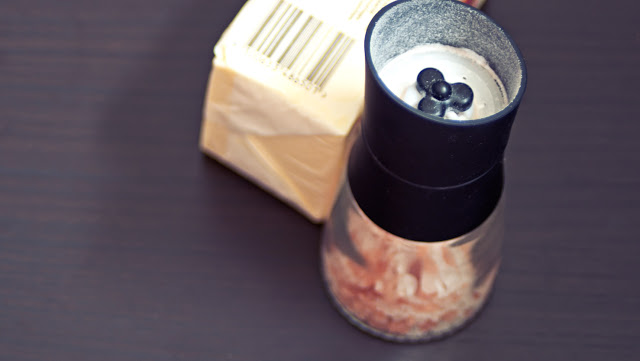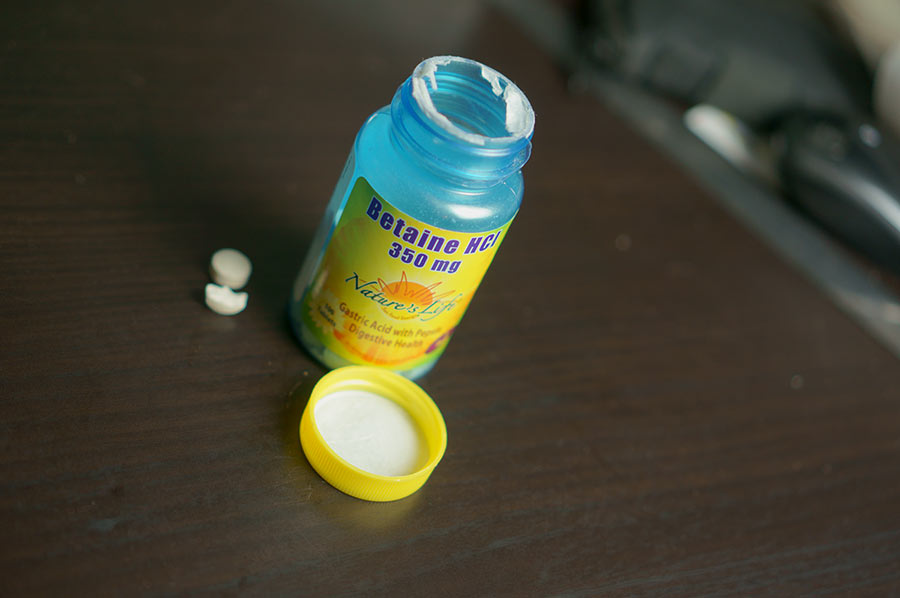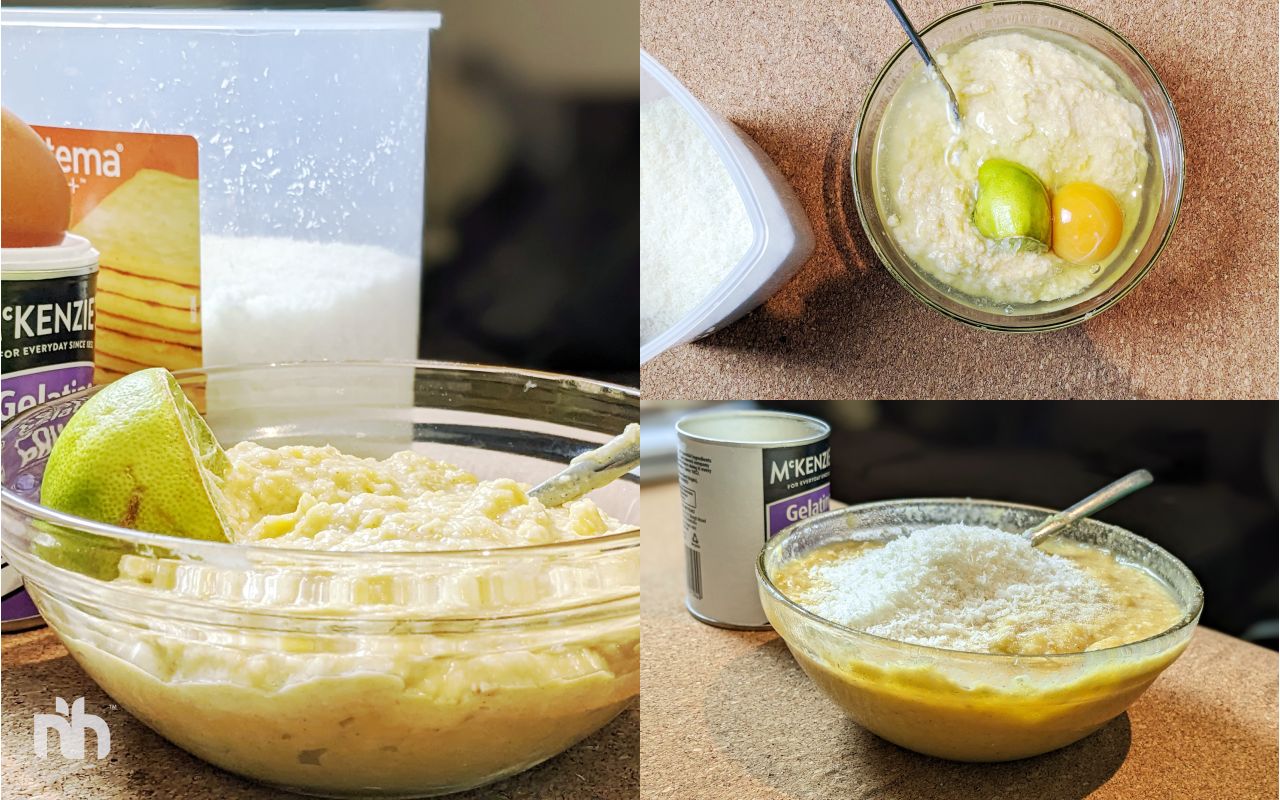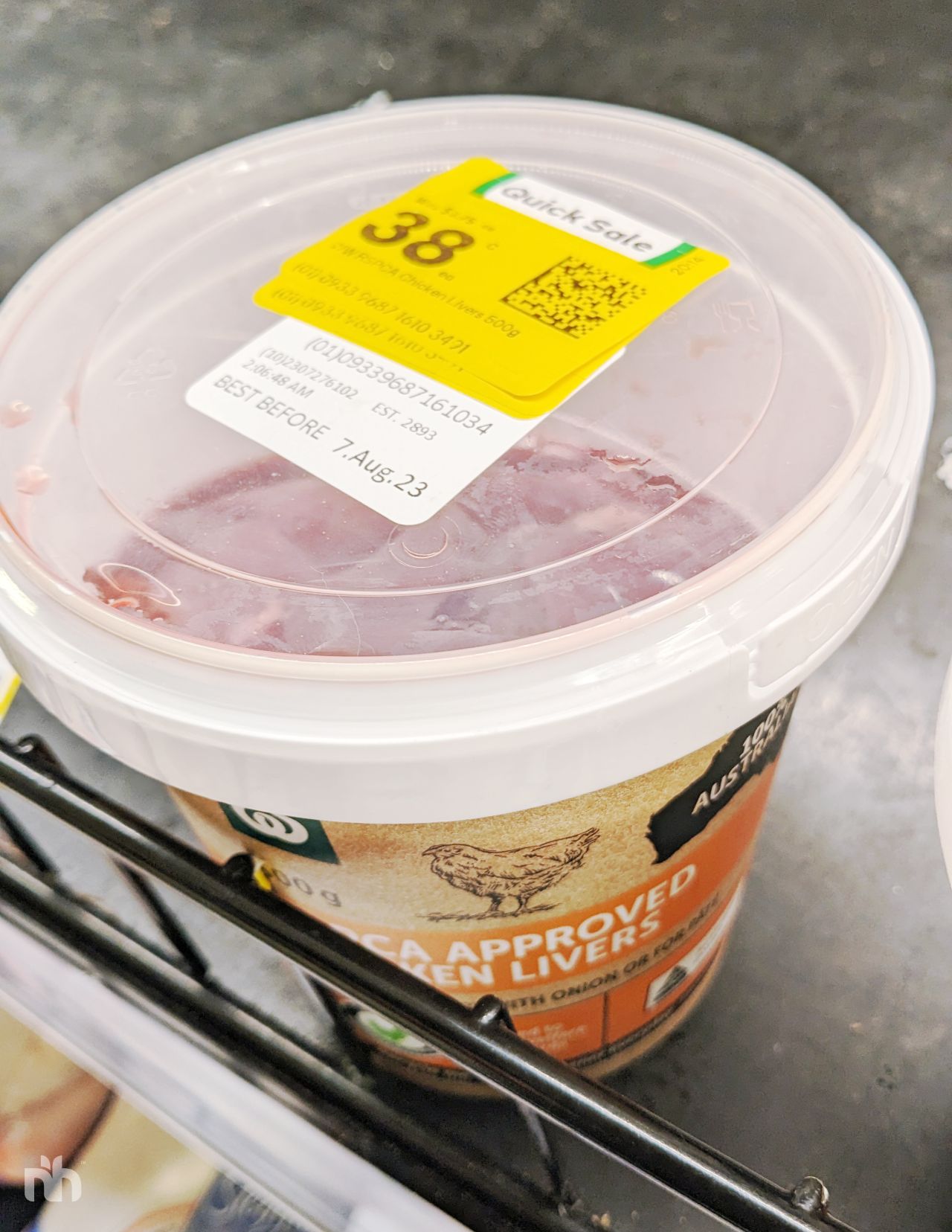
Fasting. Authentication. Inquire. Repeat
Cliff
Here in this Counter Arguments I am compiling thoughts on how to go about dealing with nay-sayers.Here in this Counter Arguments I am compiling thoughts on how to go about dealing with nay-sayers. Due to its broad range of themes I am splitting these into several part(s) starting firstly with general sentiments to alternative nutrition.
For those who are new to this concept initiative, welcome! May I firstly remind that nothing I share is "Gospel" that it is in any way prescriptive for all.
Live-It-Forward,
AW.
"But...saturated fats causes more heart disease!"
Spoiler alert: I am neither for nor against saturated fats. I eat what I enjoy.
- "Reanalysis of unpublished data from the Sydney Diet Heart Study and the Minnesota coronary experiment reveal replacing saturated fat with linoleic acid containing vegetable oils increased mortality risk despite significant reductions in LDL and total cholesterol (TC)." Malhotra A et al. 2017
- "Setting: Ambulatory, coronary care clinic in Sydney, Australia. In this cohort, substituting dietary linoleic acid in place of saturated fats increased the rates of death from all causes, coronary heart disease, and cardiovascular disease." Ramsden CE et al. 2013
- "This meta-analysis further demonstrated that a higher consumption of dietary SFA is associated with a lower risk of stroke, and every 10 g/day increase in SFA intake is associated with a 6% relative risk reduction in the rate of stroke. Further research is needed to explore the influence of specific SFA types and different macronutrient replacement models of SFA on the stroke risk." "Kang ZQ et al. 2019."
- "An analysis of cholesterol values by usual hospital laboratory methods in 1,700 patients with atherosclerotic disease revealed no definite correlation between serum cholesterol levels and the nature and extent of atherosclerotic disease." Garret HE et al. 1964
"Stomach acids? Isn't that bad for you?"
Just show them this picture.

And then ~ studies.
- "Calcium absorption in the intestine requires calcium to be in an ionized form. The low pH in the stomach is critical for solubilization and ionization of calcium salts present in foods, although calcium oxalate complexes remain insoluble and thus poorly absorbable. " Shkembi B & Hyppertz T, 2022.
- "Adequate intestinal absorption of calcium is a major factor for maintaining systemic calcium homeostasis. Recent observations indicate that a reduction of gastric acidity may impair effective calcium uptake through the intestine. " Kopic S & Geibel JP 2013
- "One of the most remarkable changes with aging is the frequent development of atrophic gastritis and the inability to secrete gastric acid. This process affects approximately a third of older adults in the United States and only recently was recognized to be due to infection by H. pylori in the majority of cases. The lack of gastric acid in atrophic gastritis may lead to small intestinal bacterial overgrowth and influences the absorption of a variety of micronutrients, including iron, folate, calcium, vitamin K, and vitamin B12. Lactose maldigestion is a frequent condition in older adults and is extremely common worldwide." (Saltzman JR & Russell RM 1998)
- "Acute infection with H. pylori produces a decrease in gastric acid secretion, and this decline is maintained in the chronic state if the infection remains in the corpus and body (509). Patients with body-predominant gastritis and a reduction in gastric acid output have an increased risk for development of gastric cancer (489,515)." (Shulkes A et al. 2006)
If they ask "Why", ask them if they are aware of H.pylori infection. Give them a slight surprise that 50% of adults are infected (Pilotto A. & Franceschi M 2014). That's not just coming from one "1" study or paper, it's an established finding worldwide. A coin flip, basically.
A little interesting history behind H.Pylori:
- "Helicobacter pylori (H. pylori) has infected humans for more than 58000 years[1], yet it largely escaped notice until it was cultured by Marshall and Warren[2]. Research on H. pylori changed paradigms regarding disease causation. Physicians previously attributed ulcers to stress or anxiety and did not believe that bacteria could cause cancer. H. pylori was the first bacterial species proven to cause cancer and is classified as a group I carcinogen by the International Agency for Research on Cancer. This is the same category as smoking, radiation, and asbestos. " ~ (Testerman TL & Morris J 2014)
- "Approximately 50% of the global population worldwide is thought to be colonized with H. pylori, which is typically acquired within the first 5 years of life[7]." - Pilotto A. & Franceschi M. 2014).
"But I'm told that Stomach Acid inhibitors / blockers / PPIs - nexium etc are good for me!"
Good - if you are a shareholder of "Big Pharma".
Otherwise ~ ....kidney damage, nerve damage, impaired vision, heart failure, B12 deficiencies / malabsorption, key mineral deficiency (magnesium, perhaps others), depression/ dementia and mental impairments....
- " The results suggest excess risk of death among PPI users; risk is also increased among those without gastrointestinal conditions and with prolonged duration of use. Limiting PPI use and duration to instances where it is medically indicated may be warranted." Xie Y. et al. 2016
- "Calculation of the population attributable risk indicated that 14% of depression cases could be avoided by withdrawal of PPIs. Use of PPIs might represent a frequent cause of depression in older populations; thus, mood should be routinely assessed in elderly patients on PPIs." Laudisio A et al. 2018.
- "B12 status declines during prolonged PPI use in older adults, but not with prolonged H2 blocker use; supplementation with RDA amounts of B12 do not prevent this decline. This report reinforces that B12 deficiency is common in the elderly and suggests that it appears prudent to monitor periodically B12 status while on prolonged PPI use, to enable correction before complications ensue." (Dharmarajan TS et al. 2007)
- " A total of 73 679 participants 75 years of age or older and free of dementia at baseline were analyzed. The patients receiving regular PPI medication (n = 2950; mean [SD] age, 83.8 [5.4] years; 77.9% female) had a significantly increased risk of incident dementia compared with the patients not receiving PPI medication (n = 70 729; mean [SD] age, 83.0 [5.6] years; 73.6% female) (hazard ratio, 1.44 [95% CI, 1.36-1.52]; P < .001)." (Gomm W. et al. 2016).
- "Patients who took proton pump inhibitors for heartburn, acid reflux, or ulcers had an increased risk of kidney function decline, chronic kidney disease, and kidney failure. The longer patients took the drugs, the greater their risk. Proton pump inhibitors are widely used, overprescribed, and generally perceived as safe." ~ EureAlert - News Release 14th april 2016 ~ (Yan X. et al. 2016) American Society of Nephrology
- "In patients with CAD (Coronary Artery Disease), PPI use is independently associated with an increased incidence of HF (Heart Failure) and death but not with a high rate of acute ischaemic events. Further studies are needed to confirm these findings." (Lazaro AM et al. 2017)
- "In 2006, hypomagnesemia was first described as a complication of proton-pump inhibitors. To address this issue, we systematically reviewed the literature. Hypomagnesemia, mostly associated with hypocalcemic hypoparathyroidism and hypokalemia, was reported in 64 individuals on long-term proton-pump inhibitors. Hypomagnesemia recurred following replacement of one proton-pump inhibitor with another but not with a histamine type-2 receptor antagonist. " (Janett S et al. 2015)
- "We analyzed over ten million United States Food and Drug Administration Adverse Event Reporting System reports, including over forty thousand reports containing PPIs, and provided evidence of increased propensity for memory impairment among PPI reports when compared to histamine-2 receptor antagonist control group. Furthermore, we found significant associations of PPI use with a wide range of neurological adverse reactions including, migraine, several peripheral neuropathies, and visual and auditory neurosensory abnormalities." (Makunts T et al. 2019)
...And we're not done yet. Both PPI's / HCL (hydrochloric acid) blockers make h.pylori infections worse.
- "HCl antisecretory drugs (H2 receptor antagonists and proton pump inhibitors) may actually promote H. pylori overgrowth. Patients with H. pylori experience exaggerated response in elevations of pH with antisecretory therapy. Eradication of H. pylori restores normal gastric acidity and pepsinogen ratio." (Pizzorno JE, et al. 2016)
"Gelatin? Aren't those connective tissues? Yuck! arent they bad for you?"
Pedestrian diets today only believe in the value of muscle meat, that is, proteins that are emphasized in certain amino acids, particularly methionine. It remains arguable that this excess methionine appears to be adversely correlated with higher homocysteine ~ a famously proclaimed marker for inflammation and/or certain vitamin deficiency.
Ancestral diets, primarily that of animal proteins, and fats in nose-to-tail traditions emphasize their protein intake from gelatin. Here "Gelatin" refers to a group of amino acids composed mostly glycine, proline, and serrine; all of which have been strongly argued that they should be classed Essential Amino Acids (Weston Price Foundation).
Various nutraceutical research on glycine appears to be very positive in general.
- "In the industrialized societies, the consumption of gelatin has decreased, relative to the foods that contain an inappropriately high proportion of the antimetabolic amino acids, especially tryptophan and cysteine. The degenerative and inflammatory diseases can often be corrected by the use of gelatin-rich foods." Ray Peat ~ Gelatin, Stress, Longevity
- "[...] glycine, which is found most abundantly in bones and other connective tissue (Table 3); choline, which is found primarily in liver and egg yolks (Table 4); and betaine, which we can either make within our own bodies from choline or obtain directly in our diets from spinach, wheat, and beets (Table 5). Muscle meat provides its own vitamin B6, but provides relatively little glycine, choline and betaine. In order to safely use extra methionine from muscle meat to support our antioxidant defenses and detoxification systems, we therefore must balance muscle meat with liver and egg yolks as well as with soups, gravies, sauces, or other creative dishes made from bones and other connective tissue, including skin." ~ Weston A Price Foundation.
- "The experimental group consumed a snack with added gelatin hydrolysates from carp skins for 5 weeks in between the series, the placebo—a snack without added hydrolysates, and in the control—no supplementation was implemented[...]After 5 weeks of snack consumption, an increase from medium to high antioxidant potential was observed for E [experimental group]." ~ (Morawska-Tota M et al. 2022)
- "The glycine treatment at the dose of 1.0-2.0 g/day was accompanied by a tendency to a decreased 30-day mortality (5.9% in 1. 0 g/day glycine and 10% in 2.0 g/day glycine groups vs. 14% in the placebo and 14.3% in 0.5 g/day glycine groups), to an improved clinical outcome on the Orgogozo Stroke Scale (p < 0.01) and the Scandinavian Stroke Scale (p < 0.01) and to a favourable functional outcome on the Barthel index (p < 0.01 in 1.0 g/day glycine vs. placebo group in patients with no or mild disability)." (Gusev EI et al. 2000)
- "Glycine is known to be reduced in patients with nonalcoholic fatty liver disease (NAFLD) and nonalcoholic steatohepatitis (NASH), diseases with no approved treatments. Rom et al. found that glycine biosynthetic genes showed reduced expression in humans and mice with NAFLD. Conversely, both genetic and dietary reduction of glycine worsened symptoms in the model, suggesting a potential causative role for glycine in NAFLD onset. Administration of glycine or a Gly-Gly-L-Leu tripeptide improved symptoms in a mouse model of NASH by enhancing fatty acid oxidation and glutathione synthesis and modulated the gut microbiome through a potentially indirect effect, indicating the potential of the approach as a treatment." (Rom, O et al. 2020).
- "In terms of weight loss for people with obesity, the greater hunger-suppressing effect of gelatin may play a role in reducing energy intake if this effect is maintained when consuming a gelatin diet in the long term. In addition, long-term use of casein may contribute to preservation of fat-free mass." ~ (Hochstenbach-Waelen A et al. 2009)
An interesting comparison between marine vs beef / pork gelatin sources:
- "Comparability of fish gelatin to both porcine and bovine gelatin and comparability of gelatin obtained from different types of fish has been studied. A higher variability of amino acids of collagen obtained from fish than that obtained from beef or pork was found. This higher variability of amino acids of colloagen resulted in higher variability of amino acids of gelatin. The source and type of collagen would affect the properties of the resulting gelatins. Fish collagen/gelatin had lower amounts of proline and hydroxyproline and higher amounts of threonine and serine [9,22,23]." (Al-Nimry S et al. 2021).
"Fibre should be eaten every day. They are good for <insert feel-good statements / claims here>."
Warning: the following might be too graphic. But this is "Science".
- "AIM: We aimed to test the hypothesis that consumption of a high fibre diet retards gas transit. CONCLUSION: Consumption of a high fibre diet retards intestinal gas transit by decreasing bolus propulsion to the rectum. Thus, in addition to increasing gas production by colonic flora, fibre ingestion may elicit gaseous symptoms by promoting gas retention." Gonlachanvit S et al. 2004.
- "Dietary fiber intake, symptoms of constipation, difficulty in evacuation of stools, anal bleeding, abdominal bloating or abdominal pain were recorded at 1 and 6 mo. RESULTS: For no fiber, reduced fiber and high fiber groups, respectively, symptoms of bloating were present in 0%, 31.3% and 100% (P < 0.001) and straining to pass stools occurred in 0%, 43.8% and 100% (P < 0.001)." Ho KS et al. 2012
We always assume that growing kids should have a relatively strong gut, right? Well...
- "There is a lack of high quality evidence on the effectiveness of dietary interventions. This review provides no evidence that fibre supplements, lactose free diets or lactobacillus supplementation are effective in the management of children with RAP (recurring abdominal pain)." Huertas-Ceballos A et al. 2008
If your gut is your instinct, then why make the traffic jam worse?
- "The role of dietary fiber in constipation is analogous to cars in traffic congestion. The only way to alleviate slow traffic would be to decrease the number of cars and to evacuate the remaining cars quickly. Should we add more cars, the congestion would only be worsened. " Ho KS et al. 2012
"Organ meats are disgusting!"
We may at some stage pay a heavy price of our own humility, in trade for pedestrian conveniences.
Good news ~ they are not that hard to cook. No, you don't need half a kilo of butter. Nor do you need the most expensive Cognac. Gizzards, and hearts work best with some liquids, for every 100g - use a squeeze of lemon, cream, and any garlic condiment. Microwave (cover with a plate on top) or stove top cooking - no further than a few minutes per 100g. Anything darker than brown may indicate tough or rubbery finish.
For livers ~ no, you don't need to soak them hours upon hours with milk only to then tossing the liquids away (what a waste).
And no, you do not need to finely mesh and strain afterwards. For every 500g livers, mix in with 150ml cream, garlic powder, salt, pepper. On a hot stainless steel pan, prep olive oil or a knob of butter. Brown the onions. Then cook everything. As soon as we're nearing five minute marks or when things are starting to look brown, immediately turn off the heat. Let collateral heat continue the cooking and cool at the same time. Blend. Done.
No need for cognac as mentioned. I like to use cabernet sauvignon. Gossips 2021, despite their "cheap" price, goes a long way. Splash to perhaps no more than two tablespoon(s) during cooking.
What if your guest are sheepish? Serve them with extra cheese, with bit of honey (Kudos to Frank Tufano). If they still complain, serve them with crackers.
Meanwhile, onto the research. Mainstream dieticians thankfully, are now admitting their immense nutrition value.
- "Alpha-lipoic acid (ALA) is an antioxidant and naturally occurring fatty acid that can be made in the mitochondria of the body and is found in a variety of foods including organ meats, spinach, tomato, broccoli, and yeast. Beef kidneys and hearts contain the highest amounts of ALA among animal food sources." (Ratliff E. 2020)
- "Almost all byproducts are a rich source of trace elements, whose levels/amounts are usually much higher in byproducts such as offal than in muscular tissues. Furthermore, the demand for offal is likely to increase with the rapidly growing population, because it can be commercially sold for human and animal nutrition and is economically advantageous (e.g., high profitability)." (Wioletta B. 2019 et al.)
- "According to Florek et al. [1], the levels of certain minerals, such as iron, zinc, magnesium, and calcium, are higher in veal and beef liver than in muscular tissue. Offal with favorable composition, minerals, vitamins also includes the brain, tongue, heart, and kidneys. " (Wioletta B. 2019 et al.)
Chicken gizzards or giblets, referring to the stomach organs of birds have garnered attention among scientific literatures. How many people today are aware of this?
- "On the other hand, we investigated the effectiveness of chicken gizzard substance on nephrolithiasis. We administered 2000 mg, 3 times a day of chicken gizzard substance to patients by oral to induce stones in the kidney. Based on the results of our observations, this high dose of this substance reduced the size of calculi in the treated groups (15 and 30 d) by 6.564 and 5.664 mm, respectively." (Einollahi B. et al. 2017)
How many people know that DAO (Diamine Oxidase), a critical component for methylation specifically for regulating histamine, exists predominantly in organ meats? (Schnedl WJ et al. 2019) Diamine Oxidase deficiency is correlated with a decrease in Magnesium status (MTHFRSupport.com.au), both are therefore a synergistic importance.
- "...the oral supplementation of commercially available DAO food supplements, prepared from pig kidney, has been suggested as a treatment of histamine intolerance (Smolinska et al., 2014). With this study, we aimed to demonstrate that the oral DAO supplementation improves symptoms, including GI, cardiovascular, respiratory and skin complaints in patients suffering from HIT (Histamine Intolerance)" (Schnedl WJ et al. 2019).
- "Diamine oxidase (DAO) activity in the duodenum was high in control rats. Duodenal DAO activity decreased gradually and reached half the value of controls on the eighth day of Mg deficiency." (Nishio A et al. 1987)
A little interesting history behind how organ meats were accepted (back then). TLDR; meat in general were so important during WWII, at least in the US - that a good percentage of meat supplies from commercial shelves has had to be re-distributed towards all wartime efforts. During this time, organ meats were being widely promoted, and various books and pamphlets were mass produced to instruct households to prepare various organ meats for everyday consumption.
- "Meat was considered as important to the war “as are tanks and aeroplanes.”3 The slogan “Food will win the war” was pioneered, and Meatless Mondays were started in an attempt to conserve resources as growing amounts of beef and pork, as well as butter and cheese, were shipped overseas to feed both American and Allied troops. With more meat heading overseas, rationing was instituted at home and smaller portions were seen on the plates of American households." (Ratliff E. 2020)
- "In 1940, the National Research Council assembled the Committee on Food Habits, led by anthropologist Margaret Mead, to examine American eating habits and their influences. The goal was to devise a way to persuade Americans to part with their favored cuts of meat in exchange for the parts often left on the slaughterhouse floor—hearts, livers, kidneys, and other organs." (Ratliff E. 2020)
"...But I believe in "Science"! I follow where the Science goes!"
Lastly I shall close with a general ultimatum ~ there is no more truth, than relying on you, your honesty, integrity, morality or whatever semantics you uphold towards nobody, but yourself.
Update Saturday 19th of August ~ added an extra coverage below. This has become quite serious.
--
Sadly "Science" in and of itself, is not always a medium for reliability. Here, I am referring to fraud, fakery, corruption, and so on. At best, under my own impartiality I consider it as a forum.
Does this mean each and every citations, I share are all fraud? No. Absence of evidence is not evidence for absence.
Thus I am my own control. I am in control of things that I can control or compensate. If one relies on others to override this, be it that as a control "group"; then I express well wishes on your journey for self-critical thinking. Anecdotes, I argue is just as valid as evidence. Because it represents and adds altogether ~ the totality of all evidences.
We are all stewards of our own interpretations. Deny, believe or agree - you have to authenticate your own convictions. I dare say one must remain unpredictable. Or elusive at least ~ from outside judgment, frowns and condescends.
And that's all folks! Let me know your thoughts in the comments below. I shall prepare and look forward to write-up more Counter Arguments, as however long overdue since my first attempt.
Live-It-Forward,
AW.





